Lenovo has come out swinging at CES with a range of new products from laptops to home storage devices aimed at everyone from gamers to home automation enthusiasts. Here’s a roundup of their new releases for 2017.
Legion laptops
Gaming enthusiasts are particular. They like colourful chassis, bright keyboard lights, cool-sounding brand names and scintillating performance in PCs.
Those are ideals Lenovo has embraced with its new Legion line of gaming laptops and PCs. Introduced on Tuesday, Legion will feature some of the most loaded PCs offered by Lenovo.
In a way, Legion is to Lenovo what Alienware is to Dell and Predator to Acer – a product family that will help Lenovo cash in on PC gaming and virtual reality. Beyond PCs, the Legion brand could also include gaming monitors and accessories.
Lenovo isn’t known as a game PC maker, but it isn’t stretching outside its comfort zone with Legion. It already offers Y-series and IdeaPad gaming PCs, and has partnered with Razer to build not only desktops, but keyboards with lighting effects and other gaming accessories. Lenovo hopes Legion – a name coined after the large units in the armies of the Roman empire – will resonate with gamers.
The PCs also have to be good of course, and Lenovo is off to a decent start. The company is offering two 15.6″ gaming laptops, the Legion Y720 and Y520, both of which are targeted at mainstream and enthusiast gamers.
The colourful Y720 has black and red accents, can be configured with a 4K screen and supports VR headsets.
The Legion Y720 is one of the first gaming laptops to support Dolby Atmos, which improves the audio experience while gaming. It has dual two-watt JBL speakers, and a three-watt Dolby Atmos subwoofer.
An optional Xbox One Wireless can be integrated so gamers can use the same wireless accessories and controllers that work with the popular gaming console.
Support for Dolby Atmos, HDR gaming and Xbox One Wireless receiver were mentioned by Microsoft as major improvements it is bringing to PC gaming platform with the Windows 10 Creators Update. The Y720 will immediately exploit those features to improve gaming quality.
The Legion Y720 weighs 3.2kg and offers either Core i7-7700HQ or Core i5-7300HQ processors based on the Kaby Lake architecture. For such a high-end laptop, the lack of a Core i7-HK chip – which can be overclocked – is surprising. The Core i7-HK is being included in some new Alienware laptops; gamers like the ability to crank up performance by turning the dial on the clock speed in CPUs.
The Y720 also will have an Nvidia GeForce GTX 1060 GPU with 6Gb of GDDR5 memory. The laptop has three USB 3.0 ports: one Thunderbolt 3 port; an HDMI port; and a DisplayPort port. An optional RGB keyboard can give a multitude of backlit color keys to gamers.
Some of the more advanced features in the Y720 aren’t in the the 2.4kg Y520, which has Intel Kaby Lake processors. GPU options include an Nvidia GeForce GTX 1050 Ti GPU.The laptop has USB Type-C ports, two USB 3.0 ports, an HDMI port and two Harman speakers.
The Y520 is targeted more at mainstream users with its HD screen and lower price. It does not have a Thunderbolt 3.0 port and a 4K option isn’t available.
The Legion laptops have up to 16Gb of DDR4 DRAM and 802.11ac Wi-Fi. The storage options stretch to 2Tb hard drives or 512Gb NVMe SSDs. Both laptops have Gigabit Ethernet.
Miix 720 tablets
The world is waiting for Microsoft’s next Surface tablet, but when it ships, it’ll have to contend with Lenovo’s new Miix 720, a 12″ Windows tablet loaded with cutting-edge features.
Lenovo has borrowed some ideas from the Surface with a kickstand at the back of the Miix 720, which helps the tablet sit upright on a desk or tabletop.
A difference-maker in the Miix 720 is the USB-C port, which is also a high-speed Thunderbolt 3 port to connect external peripherals like displays and storage devices. Surface Pro 4 only has one full-sized USB 3.0 port. Additionally, the Miix 720 has USB 3.0 and USB 2.0 ports.
The Lenovo tablet supports up to 16Gb of faster DDR4 DRAM. The Surface Pro 4 supports up to 16Gb of the older and slower DDR3 memory.
The Lenovo’s 12″ screen is smaller than the 12.3″ on the Surface Pro 4 but displays images at a higher resolution. The Miix 720 displays images at a 2880×1920-pixel resolution, which is better than the 2736×1824 than the Surface Pro 4.
The Miix 720 has storage capacity up to 1Tb, and a keyboard attachment turns the tablet into a laptop. Those capabilities are available on the Surface Pro 4. Lenovo will separately sell a stylus allowing users to take notes and draw on the tablet.
Lenovo’s tablet weighs about 780g, or 1.1kg with the keyboard attachment. It has a 1MP front camera with infrared, allowing users to log into Windows PCs via face recognition and a 5MP rear camera.
Smart Assistant
Lenovo is dipping its toe into the smart home market with a smart speaker that will be powered by Amazon’s Alexa Voice Service.
The Lenovo Smart Assistant looks like a mashup of an Amazon Echo and a Google Home, blending the former’s cylindrical form factor with the latter’s pastel-coloured fabric speaker grill (buyers can choose light gray, green, or orange). The base model will come with a single tweeter powered by a 5-watt amplifier and a woofer driven by a 10-watt amp. Lenovo also plans to offer a Harman Kardon Edition that will come in black.
Like Amazon, Lenovo is using an array of six far-field microphones on top of the speaker to capture your voice queries and commands from any direction, but the computer manufacturer has added a second mictophone in the centre, so there are eight in all. The Lenovo Smart Assistant will be powered by an Intel Celeron N3060 CPU, with 2Gb of DRAM and 8Gb of onboard storage. It will connect to your home Wi-Fi network with an onboard 1×1 802.11n Wi-Fi adapter and will also be equipped with a Bluetooth 4.0 radio.
Smart Storage
As inexpensive and convenient as cloud storage might be, having local storage in your home is far more convenient and offers much better privacy. The Lenovo Smart Storage will have all the features we’ve come to expect from modern NAS boxes, including an onboard DLNA server for streaming media, and one-touch data transfer from USB storage devices.
Features that will set this box apart from the competition include an onboard dual-band 2×2 802.11ac Wi-Fi adapter, with an auto-sync feature that will automatically back up wireless client devices whenever they’re in range; and onboard facial-recognition software that promises to organise your digital photo library based on faces.
Lenovo’s spec sheet indicates the box will come in 2Tb and 6Tb configurations, but that document also says there will be just one 3.5″ SATA drive inside. If that’s the case, the Lenovo Smart Storage won’t be capable of operating in RAID mode, including mirrored configurations that would provide enhanced data security by automatically writing all files to two identical drives.
ThinkPad X1
The venerable ThinkPad brand will turn 25 this year, and Lenovo’s new ThinkPad X1 devices will kick off celebrations with a slew of upgrades including sexier designs, faster processors, and screens with thinner borders.
After staying backstage in previous years, the X1 Carbon is at the front and center of the new upgrades. The 14″ laptop has shrunk considerably, and is now in the frame of a 13.3″ laptop, much like the Yoga 910. That’s partly because of a new screen with thinner borders, which helped reduced the size of the laptop. It’s not exactly an edge-less display like the XPS 13, but it’s still extremely thin.
Reducing the laptop’s size has other benefits. The X1 Carbon is lighter than before at 1.14kg and boasts a longer battery life of 15 hours. Users can configure the laptop with up to 1Tb of SSD storage and up to 16Gb of DDR3 DRAM. The screen options include full HD or the higher resolution 2560×1440-pixel screen. The laptop has two USB 3.0 and a USB 2.0 ports but no USB Type-C port.
Since its introduction last year, the ThinkPad X1 Yoga has gained popularity and has received a big upgrade with a host of new features. The new 14″ version doubles the storage capacity. It is also lighter, thinner, and offers more battery life.
The ThinkPad X1 Yoga can be used as either a laptop or a tablet. The maximum storage capacity is 1Tb, growing from 512Gb in the previous Skylake version. It offers battery life of up to 16 hours, an improvement from 11 hours in its predecessor. The device weighs 1.42kg.
It also will boast a faster GPU, and there will be an option to select Intel Iris Plus Graphics 640, which will support 4K video rendering. The hybrid also has a Thunderbolt 3 port and an HDMI port to connect external 4K displays. Additionally, the device comes with two USB 3.0 ports.
The X1 Yoga can be configured with a 2560×1440 pixel HD display or a 2560×1440 OLED screen.
Finally, the multi-purpose ThinkPad X1 Tablet, got major upgrades. It’s a detachable device that turns into a laptop with a keyboard module, or can create a 60″ projection display when a projection module is attached. It has a 12″ screen that displays images at a 2160×1440 pixel resolution, a storage capacity of up to 1Tb, and memory capacity of up to 16Gb.
It weighs about 767g, and now has a battery life of up to 10 hours and five more hours with an additional module. It has a USB-C port, a USB 3.0 port, one Mini-DisplayPort, a nano-SIM slot, and a micro-SD card slot. It has an 8MP rear camera and a 5MP front camera.
Wireless features on all X1 devices include 802.11ac Wi-Fi, Bluetooth with optional Wi-Gig chip and NFC.
IDG News Service



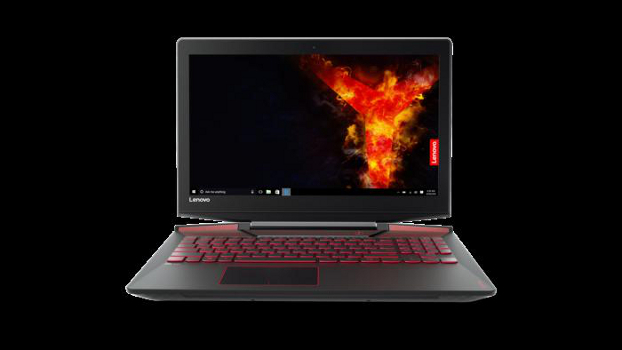
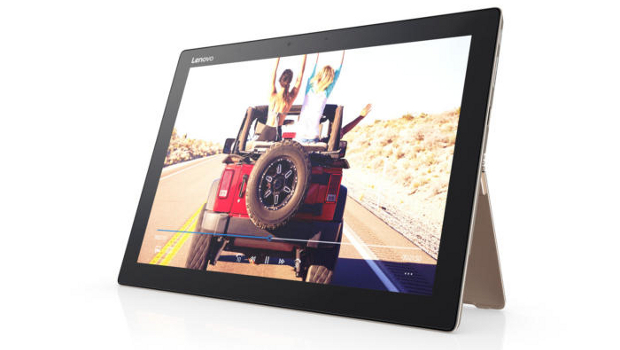
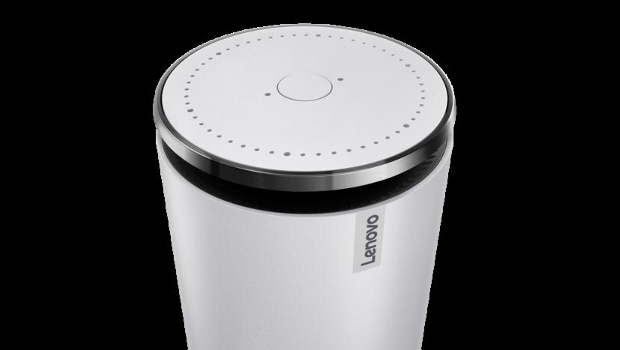
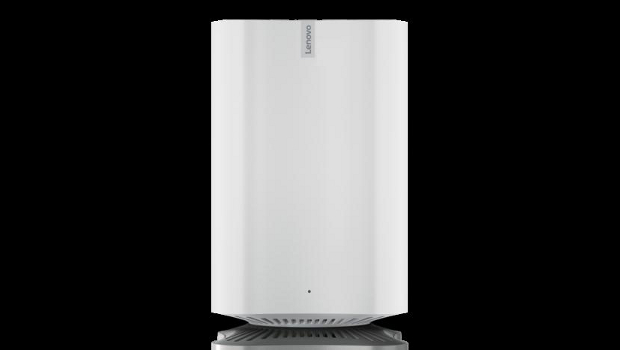
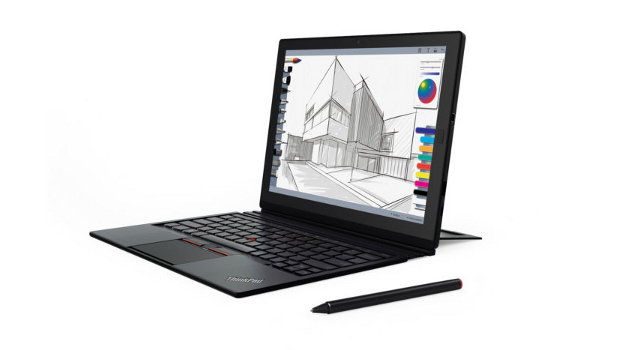




Subscribers 0
Fans 0
Followers 0
Followers